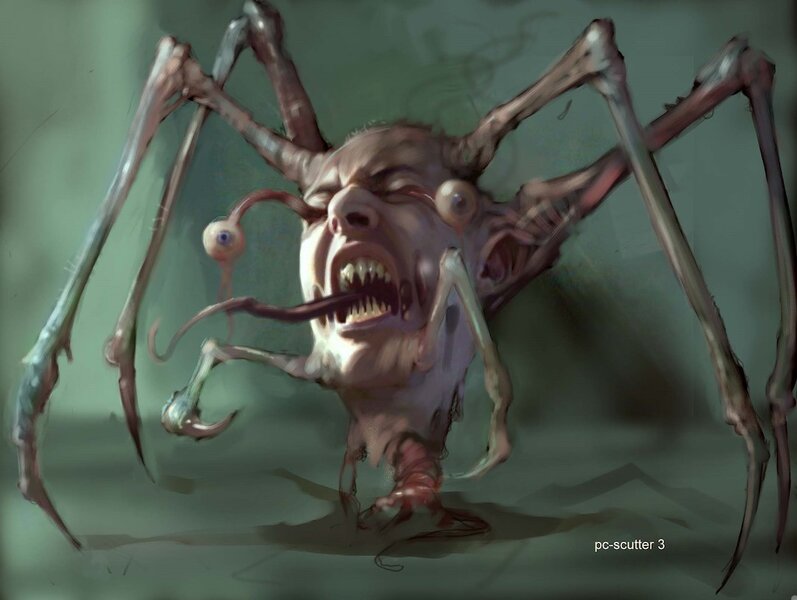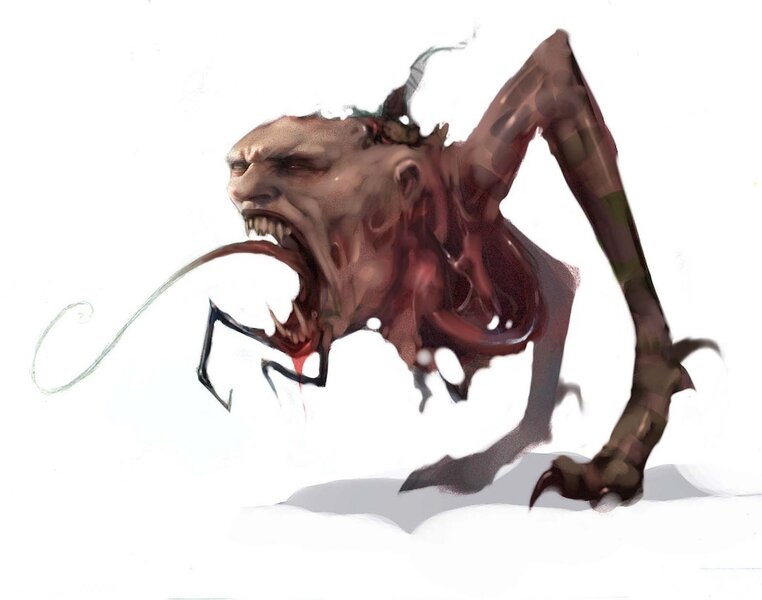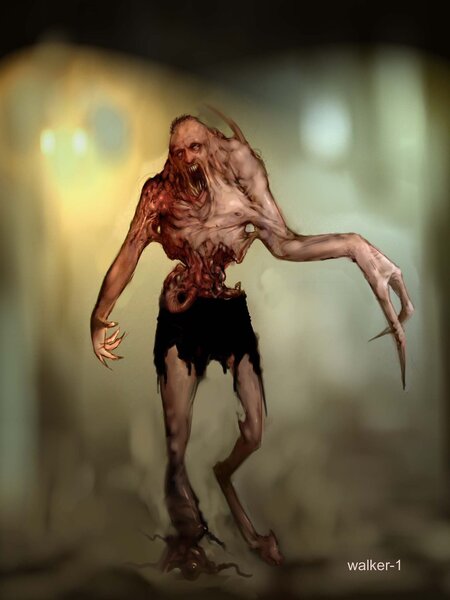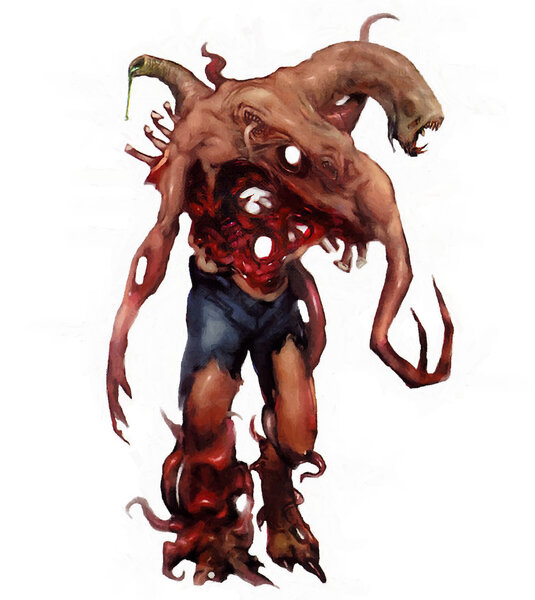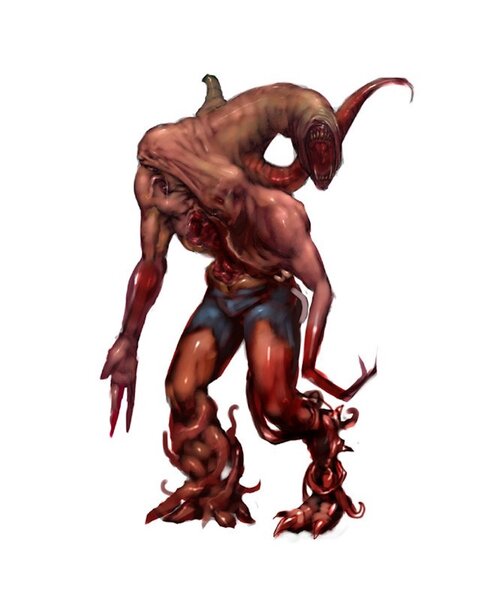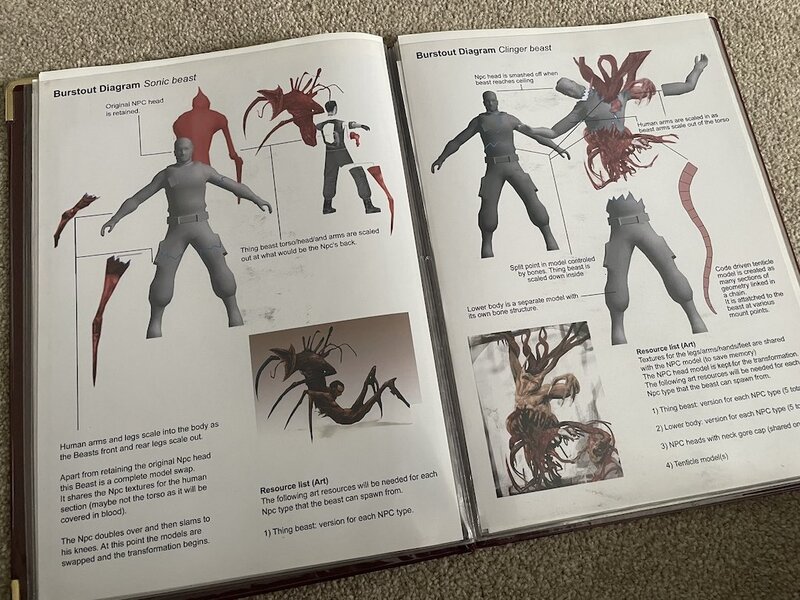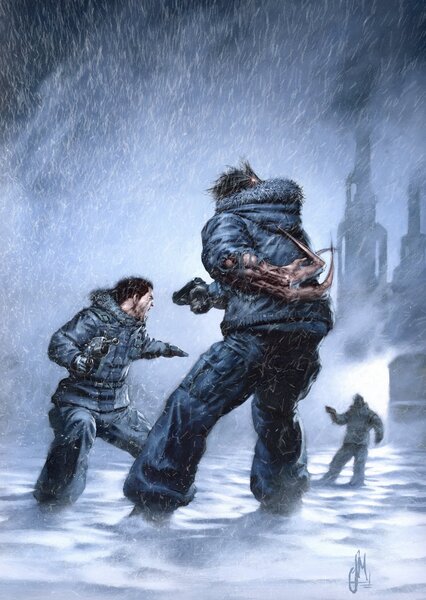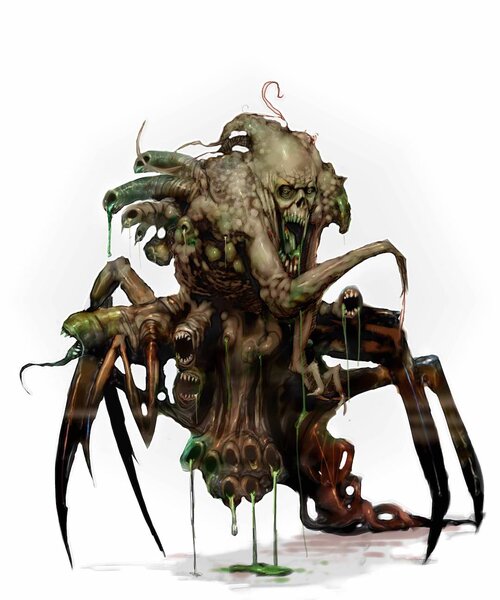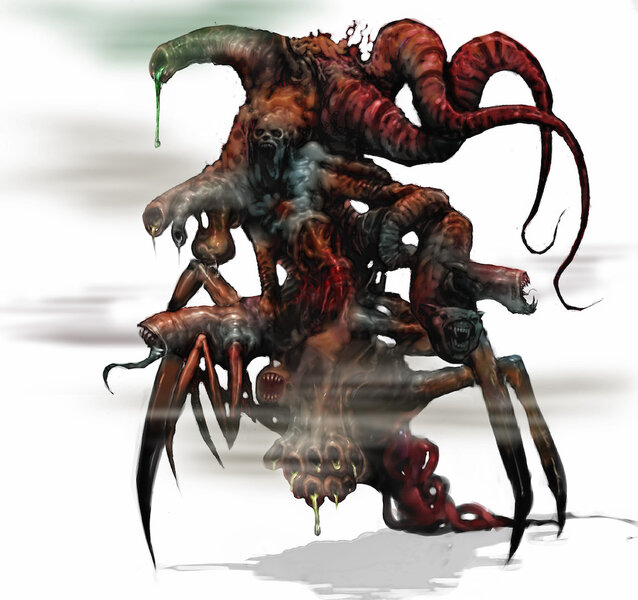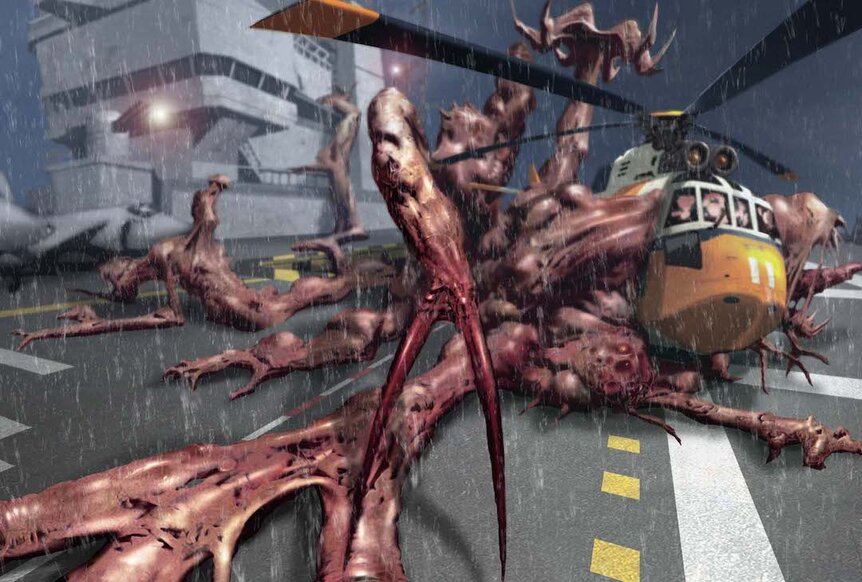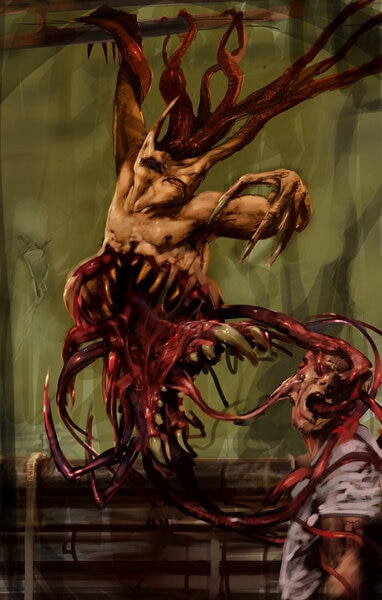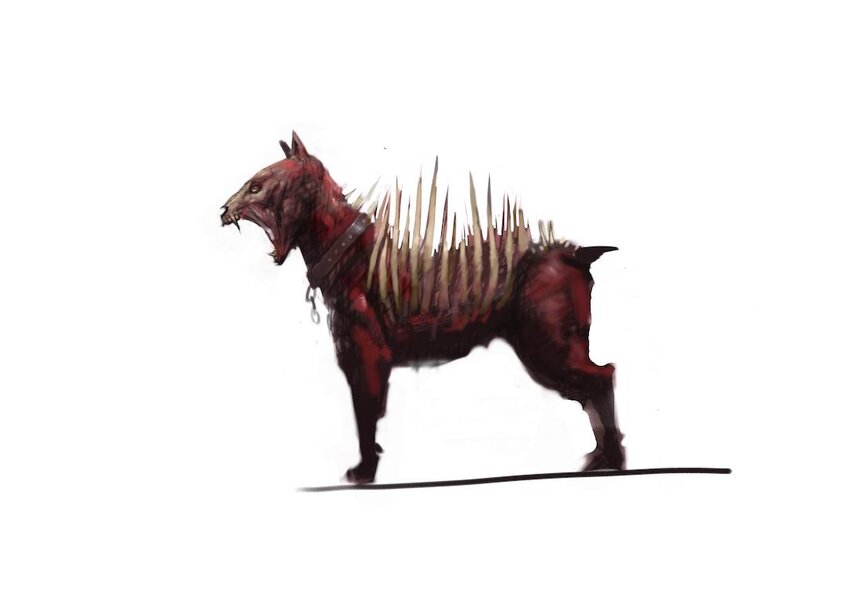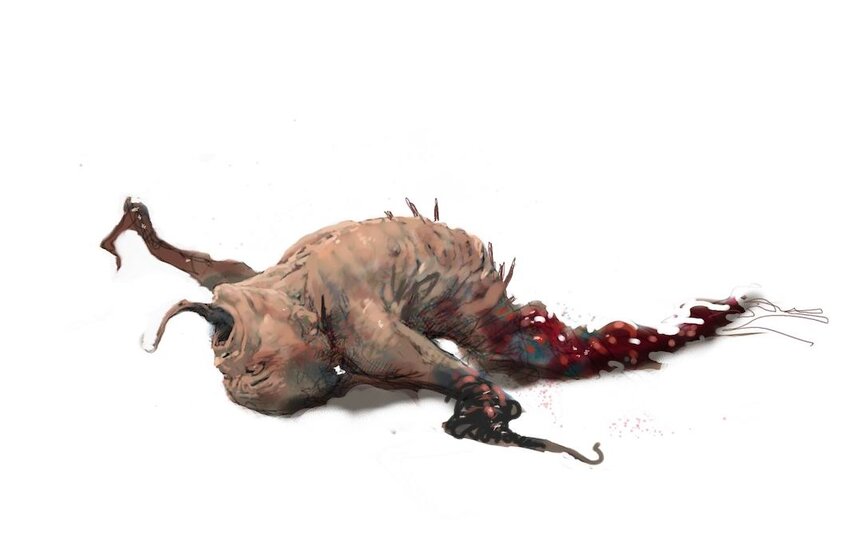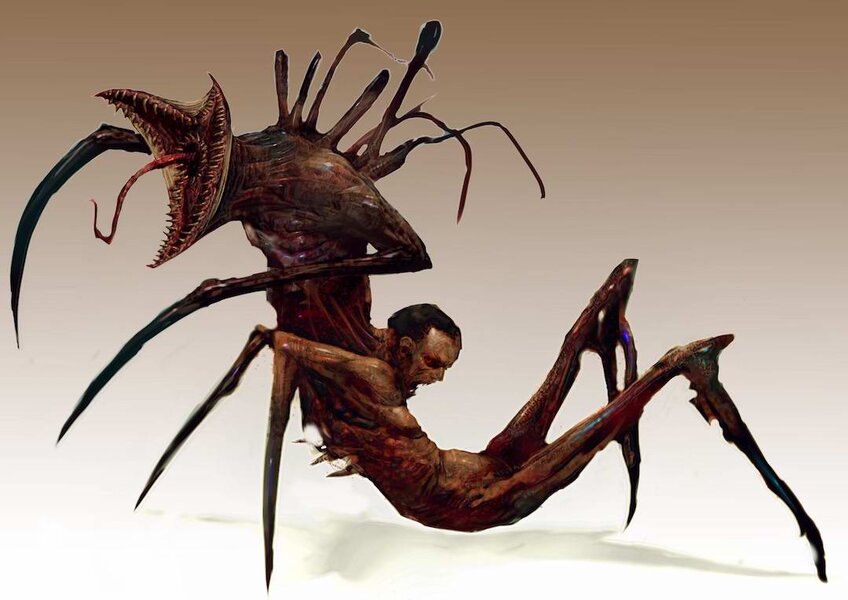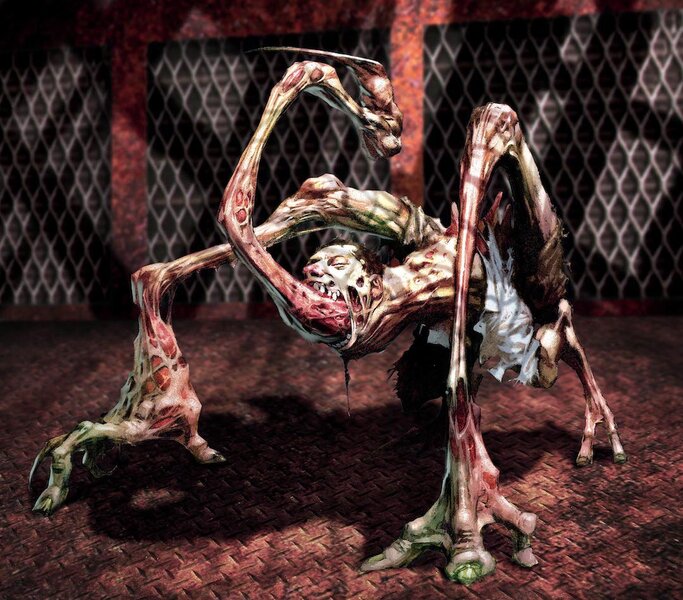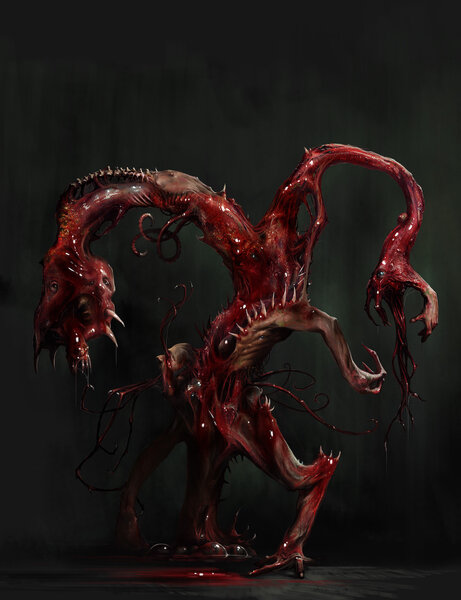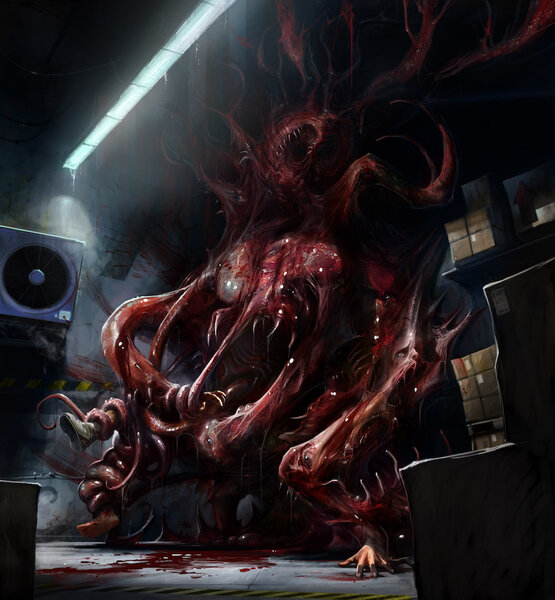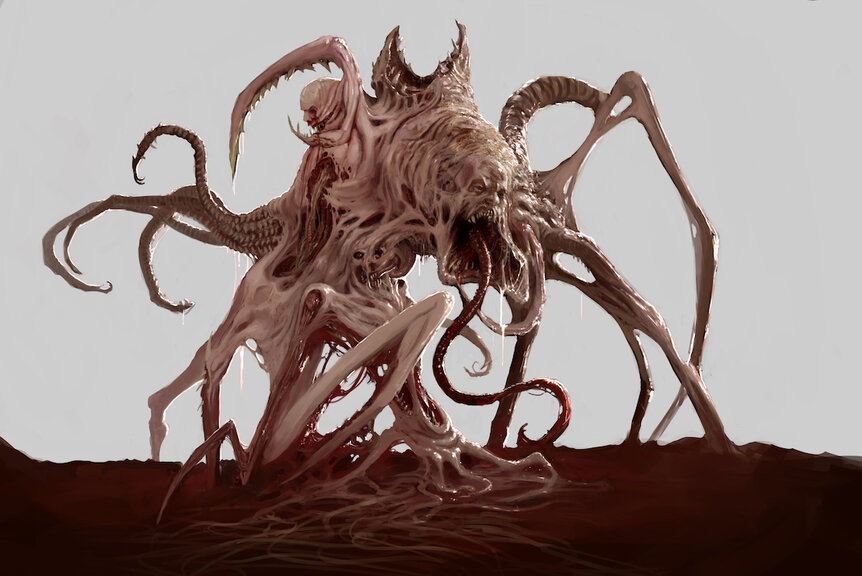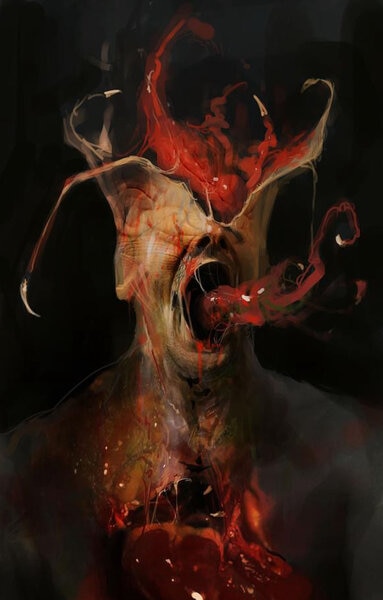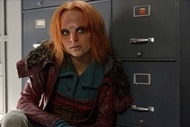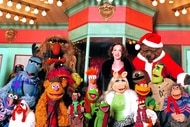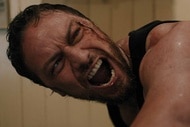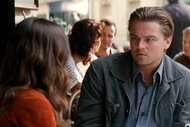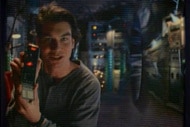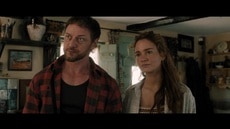Create a free profile to get unlimited access to exclusive videos, sweepstakes, and more!
The Thing 2002 Video Game Remembered by Creators: "We Were Reaching Far Beyond Our Capabilities"
Looking back on the bestselling video game sequel to John Carpenter's 1982 classic.
By the early 2000s, the icy reception to John Carpenter's The Thing had finally begun to thaw as audiences reappraised the film for what it truly was: a masterpiece of science fiction, horror, and suspense.
The cast led by Kurt Russell, the groundbreaking practical effects created by Rob Bottin, and a thickly paranoid atmosphere — helped along by Dean Cundey's shadow-filled cinematography — were rightly becoming the stuff of genre legend. Wanting to capitalize on the film's newfound popularity, Universal decided to give the property new life in the form of a 2002 video game (also titled The Thing) developed by the now-defunct Computer Artworks for PlayStation 2, PC, and Xbox.
RELATED: From John W. Campbell Jr. to Pingu: New Book Explores All Corners of The Thing Franchise
The origins of 2002's The Thing video game
The origins of The Thing video game go back to "an advanced screensaver" known as "Organic Art," formulated by Computer Artworks co-founder, William Latham. "Using a certain algorithm, it would show these organic, evolving shapes," The Thing lead designer Andrew Curtis tells SYFY WIRE over Zoom.
Latham's creation helped serve as the basis for Evolva, a 2000 video game centered around "mutant Genohunters that went down to a planet and, rather than picking up weapons, you kill animals that give you genes that let you mutate," says The Thing's co-lead programmer, Diarmid Campbell, on a separate call. "That’s a slightly more algorithmic approach to the graphics. Rather than having fixed models, they could change and walk in different ways."
This caught the attention of Universal Interactive Studios, which was "really interested to see the combination of those technologies [in a] third-person action game," Curtis says. "So they asked us to put together a demo for what we thought a game involving The Thing IP could be." To that end, they re-skinned Evolva with a group of Marines battling a Thing creature at U.S. Outpost 31. "Universal Studios was convinced at that point and signed us on to do it for real."
According to Campbell, one of the earliest ideas was to model the game in the style of Asteroids, "where you'd shoot a thing, it would split off into two, and then you'd have two monsters."
Curtis eventually pitched the idea of "squad-based ... action-horror" to set it apart from the prominent survival horror genre at the time (think Resident Evil and Alone in the Dark). To help it stand out even further, he suggested a "trust and fear system" that harkened back to the rampant paranoia of the '82 film. "I thought it'd be super interesting if [NPCs] could relate to the central character and observe your actions and take different courses or act in a different way when they saw you do things."
"You'd never quite know who was infected and then that would breed this paranoia and distrust and so on," notes Campbell.
Developing the story for The Thing video game
The story revolves around a rescue team — led by the gruff Captain J.F. Blake (Per Solli) — that discovers the mysteriously charred remains of Outpost 31 (Childs' frozen corpse is there, but R.J. MacReady is nowhere to be found) and the Norwegian base. The latter is crawling with new Thing creatures and hides a terrible secret just below the surface.
"The film's left a little bit open-ended ... so that's something we could play around with," Curtis adds. At the same time, the development team wanted to be as faithful to the movie as possible, "going frame by frame and taking screenshots" of key landmarks.
"We tried to stay as close to the film as we could," states senior artist, Cumron "Ron" Ashtiani, who went so far as to create a style guide on what makes an authentic Thing beast worthy of the visceral body horror in the Carpenter project.
"Thing creatures often have random eyeballs in strange places; that almost plant-like opening-up of structures and there being tentacles inside it; the spindly-leg stuff that pops out of things and parts of the body being able to tear away from other parts of the body and spawn more creatures ... Thing creatures rarely look demonic, so they don't grow sharp fangs and that kind of stuff. It’s way more body shock [with] weird limbs coming off other things, eyes popping up in places there shouldn't be [eyes]."
As Blake explores the Norwegian base, he must complete various objectives and test the blood of spooked squad mates wary of whom they can trust. This exposed a major flaw in the infection system, which proved to be wholly inconsistent when an NPC character turned out to be a Thing mere moments after passing a blood test. "People were like, ‘Come on! He didn't go near anybody!’" Ashtiani says.
While this apparatus of "scripted infected" annoyed players to no end once the title hit the market, it was something of a necessary evil. "We had to kind of hack certain parts of it to guarantee the player wouldn't be completely stuck in progression," Curtis confesses.
By the end of the story, Blake learns that his superior, Colonel Whitley (voiced by William B. Davis, aka The Cigarette Smoking Man in The X-Files), plans to use the extraterrestrial parasite as a bio-weapon against the rest of the world. "The story for me was very much influenced by Half-Life [and] Aliens — the larger corporation interested in a new, lucrative, powerful technology," Curtis says.
When a clearly insane Whitley transforms into a giant Thing monster, Blake (who has a rare genetic immunity to the monster) defeats him in a helicopter. As the aircraft flies away, we learn the identity of the man piloting it: none other than R.J. MacReady!
"We didn't manage to secure the voice rights for Kurt Russell," Curtis adds. "So we used a voice-alike, and there was obviously a resemblance to the character in the final scene. But that would have been great to get Kurt Russell on board. Maybe enough time has passed and he's not busy. So maybe we could approach him if we ever do a Thing 2."
John Carpenter, who gave his blessing to the game, also makes a cameo as an ill-fated scientist named Doctor Faraday. He approved the use of his likeness, but was unavailable to voice the character. "We didn't really have any contact with John during the development of the game," Curtis admits. "He was too busy directing, co-writing, and scoring Ghosts of Mars."
The biggest challenge in developing The Thing video game
Overall, the biggest obstacle of the entire development process was overcoming the limited "graphical capabilities" of the PlayStation 2, Ashtiani says. "The film relies on a lot of shadow play, a lot of light and tone. Movies of the time were all about that, where they couldn't really afford detailed special effects, so they would hide things away in the shadows. But when you're working on a video game for the Playstation 2, you end up having to do a lot things with vertex shading to hide things in shadow. But it's not quite the same. I would say the game has a slightly more cartoony, graphic novel look [when] compared to the film."
Campbell touches on the irony that comes with 20 years of hindsight: "At the time, the PlayStation 2 was almost considered this supercomputer thing. Like, 'Anything you can dream, you can do now on PlayStation 2, because it's so powerful.' The Sony announcement for PlayStation 2 had all these incredible graphical demos. But, of course, being able to show 200 models or animating on the screen at once in a graphics demo is completely different from trying to do it whilst you're also running a game engine with physics and collision detection and game logic."
A veteran crew may have tempered their expectations for success, but not the ambitious and green-horned youngsters at Computer Artworks who were hungry to prove themselves.
"[If] we had more experience, we probably wouldn't have made such a good game," muses Campbell. "I think we were reaching far beyond our capabilities. And, as a result, we created something better. Had we known better, we would have been more conservative; we would never have tried to do anything quite so complicated and ambitious."
"We were crazy ambitious," echoes Ashtiani. "I think the youthful energy and naïveté enabled us to achieve a lot more than we maybe would have achieved if we'd been 10 years older." In addition to designing the Thing transformations, Ashtiani also pitched in on environments and user interface. "You’d never mix it up like that now. You'd never have artists just doing whatever it takes to get the job done. Whereas back then, it was mad. We were all just doing whatever was needed."
Another bit of unconventional thinking centered around Blake's squad mates, all of whom were based on members of the dev team. "We had to create [around] 100 faces quickly, so we just got photos of everyone on the development team and then the artists made them look a bit more arty," Campbell reveals.
"People don't really do [that] any more because they’re worried that, ‘Oh, if you put the dev’s likeness in the game and they suddenly say, I don't want my likeness in the game, we might have a lawsuit.' But back in 2000, nobody cared," Ashtiani continues. "It was just like, ‘Get it in! It’s fun!’ ... I think that people will be surprised how ramshackle a team we were."
The Thing sequel (to the sequel) that never was
The Thing became available for the PC, Xbox, and PlayStation 2 between August and September of 2002. Gripes with the infection system aside, the game received widespread acclaim and sold over one million copies worldwide (via Bloody Disgusting).
It's still beloved to this day and even Carpenter is a fan, telling SYFY WIRE: "It's a lot of fun and I'm happy to have my visage in it."
Naturally, a sequel — or rather, a sequel to the sequel — was officially green-lit, with Ashtiani promoted to the role of lead artist. He recalls they toyed around with "three or four different treatments of the story," but their favorite involved an infected MacReady attempting to escape the Arctic in order to assimilate the rest of humanity.
RELATED: Quentin Tarantino Reveals His Fictional Star Rick Dalton Pursued Role in John Carpenter's The Thing
"In the start of the next game, Captain Blake has lost MacRready through some series of further battles," Ashtiani explains. "He believes that MaCready is infected and is now making his way to a tanker [or] a vessel off the coast of the Arctic Circle. He’s now trying to desperately get to the ship and the game takes you through an icebreaker, an oil rig, all sorts of stuff. And because of that, we were going to have fairly sizable environments with lots of NPCs."
"There was lots of snow and isolation," adds Campbell. "We wanted to keep that element of it."
The mystery of whether Childs had been taken over by the alien, meanwhile, was left ambiguous, "because we wanted to respect the way the film had played that and possibly use MacRready again in the sequel," Curtis says. As for the gameplay itself, the developers set out to perfect the maligned system of infection with a free-flowing concept Ashtiani calls "dynamic infection."
"Because we had a lot more NPCs running in the game, it meant that someone could get infected and it would spawn dynamic infection throughout the world," he continues.
This was ultimately put to the test in a demo Campbell likens to Among Us: "It was in this big complex with loads of scientists going around, doing their tasks. The idea was that one random [person] starts off infected and if they got somebody, they could infect them. We had this rather gruesome animation of this hand that would turn into a tentacle and go down their throat. Then this big scream would echo throughout the complex, so you'd know someone else was being infected. Gradually, more and more people would become infected and your job was to go on and try to wipe out the infection without killing too many other people."
RELATED: Iconic Dog Creature from John Carpenter's The Thing Transforming into an Action Figure
Curtis states that the vibe was more in line with that of a whodunit-style murder mystery. "You would explore the environment, you would investigate what had happened and then you would try and determine the source of the infection and who was infected, who to test, who to take down."
While this "made for some very interesting outcomes," Ashianti explains, they kept running into proverbial dead ends. "Sometimes, everybody somehow got infected, and you couldn't really finish the level at all because it was too difficult. And other times, no one would get infected, or you'd shoot the guy who was infected pretty early on, and that was the end of it."
The team spent about 18 months on the second game before Computer Artworks went out of business, which meant they were never able to get dynamic infection "working in a really sweet way, but the potential was amazing," adds Ashtiani. He goes on to credit the company's unfortunate closure to the fact that its creatives were spread too thin in the wake of The Thing's success.
"We went from being a one-game studio to being like a five-game studio. I think each publisher of these new games had been sold The Thing team as the team they were getting when actually, what they'd done is just split The Thing team up and spread us across five teams. I think the publishers started to realize what had been going on and [decided not] to make payments."
Check out a slew of concept art for The Thing 2:
Will we ever get another The Thing video game?
Around 2012-13, Ashtiani's Atomhawk design studio partnered with Ruffian Games (rebranded to Rockstar Dundee in 2020) to develop concept art for a new game based on the beloved Universal property. Sadly, this effort also petered out due to murky ownership rights. Like the shapeshifting visitor from another world, it's hard to tell where one licensee ends and another begins.
"With The Thing being quite an old movie now, I think that the IP has moved around in ownership between a few different companies," he says. "Who owns the rights to the films and the games and all this stuff has got quite muddled over the years. So I think that's been a bit of a challenge to get the IP rights to do another game."
The good news is, you can check out some early demo footage and artwork from the proposed new Thing video game below.
Early demo footage and artwork from the latest attempt at a video game based on The Thing
And what about a potential HD remake of the original game? While Curtis is all for the idea, he does think "it would take significant reimagining [and] refining" of several gameplay mechanics (not least of all the infection system) in order to work.
"I think we'd have to address so many core elements of the game, that it would be quite different," he says. "It wouldn’t just be a reskin for PlayStation 5 and up-res the graphics. I don't think that would be appropriate. If a team was to apply energy to remastering that, I think it would almost become a different game to the point where it almost becomes a new project."
Ashtiani agrees with the idea of tweaking certain elements, but doesn't think a drastic overhaul is needed beyond streamlining three uneven facets of the game: "scripted infection," "NPC control within your squad," and a somewhat "clunky" user interface.
RELATED: 'The Mist' at 15: Greg Nicotero compares Stephen King adaptation to John Carpenter's 'The Thing'
"Obviously, there's things like making the graphics look amazing, revisit some of the audio — get that feeling and sounding high-fidelity. Then maybe fix the way that some of those slightly dodgy things were. And that's it, really. I think you could go again with that."
Nothing's in the works right now, but as we know, all it takes is a single cell for the creature to regenerate. "There’s fondness for the game that we made," concludes Curtis, who'd love the opportunity to build a Thing experience for VR. "There’s a desire for recreating that game again. So, I imagine at some point in the future, we will see another Thing IP game."
John Carpenter's The Thing — along with its divisive 2011 prequel — can be purchased from Universal Pictures Home Entertainment. Carpenter recently hinted at a continuation of the franchise with a potential sequel featuring the return of MacReady and Childs.
In the mood for more creature feature mayhem? Jaws, Piranha, Q: The Winged Serpent, Jurassic Park, The Lost World: Jurassic Park, Jurassic Park III, Van Helsing, Jurassic World, Cocaine Bear, and Renfield are now streaming on Peacock.




